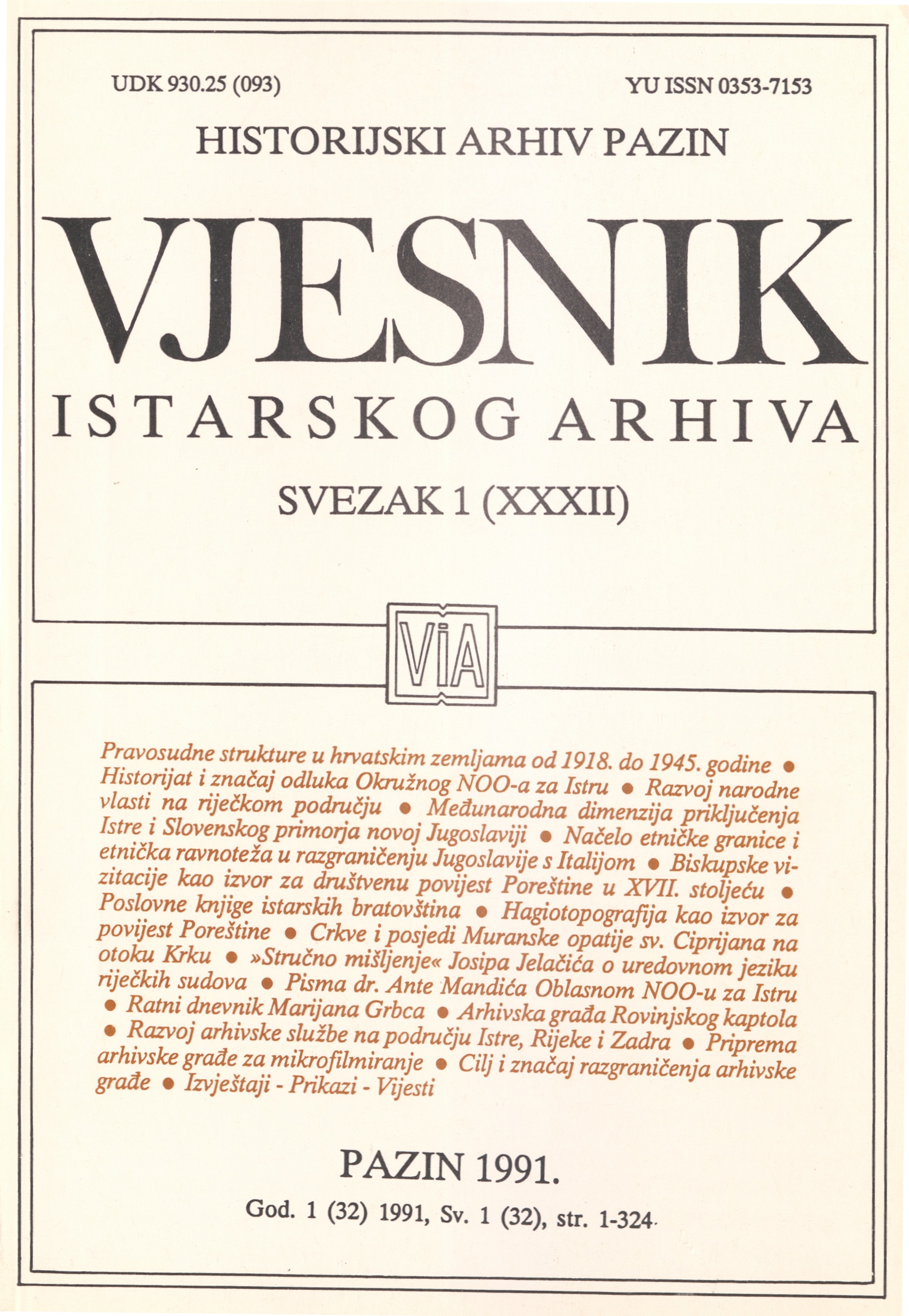The International Aspect of the Annexation of Istria and the Slovenian Coast to the New Yugoslavia
Abstract
The author considers the role of the Allies (Great Britain, the U.S.A. and the U.S.S.R.) in the issue of the annexation of Istria, Rijeka, the Slovenian coast, Zadar and the Adriatic islands to Yugoslavia. He also refers to the decisions on unification made by the District National Liberation Committee for Istria and the Executive Committee of the Liberation Front of Slovenia in September 1943, which were confirmed by ZAVNOH and AVNOJ. He points out that these decisions were in accordance with the principles of the Atlantic Charter signed by the Allies in London in 1941 and accepted by the Government of the U.S.S.R. The Charter, that is, implicitly recognized the right of nations to self-determination. However, Roosevelt’s and Churchill’s doctrine opposing any changes of pre-war state borders before the end of the war imposed a need for diplomatic flexibility on the Yugoslav side. And, in fact, NKOJ did not ask for international recognition of the above mentioned decisions at that time. Detailed consideration is given to Winston Churchill’s constant pressure on the Roosevelt administration in favour of an Allied landing in Istria in order to reach Central Europe as soon as possible, thus creating a »cordon sanitaire« towards the East, i.e. the U.S.S.R. Roosevelt persistently rejected this idea because of the need for concentrating forces on »another front« (in Normandy) and because of the danger of opening up in this way the possibility of a third World War. Although the Allies did not agree on a landing in Istria, they agreed on one thing: the Yugoslavs should not be allowed to occupy the so-called »disputed territory« - Istria, Trieste and the Slovenian coast. However, Yugoslav forces arrived in Trieste before Field Marshal Alexander did (1st May, 1945). Together with Winston Churchill, Field Marshal Alexander attempted to make the Yugoslav forces, under threat of arms if necessary, leave the territory they had conquered, which led to the so-called »Trieste crisis«. The initiative in this crisis was taken by the U.S.A and the U.S.S.R. J.B. Tito was prepared, as Stalin declared, to »meet the Allies halfway«. The crisis was resolved on 9th June, 1945, when the Agreement on the Julian Region between Yugoslavia on the one side, and Great Britain and the U.S.A. on the other side, was signed in Belgrade. A military administration was established under the Agreement and the territory was divided into Zone A and Zone B. This temporary solution remained in force until the Paris Peace Conference (1947). The text of the Agreement made in Belgrade on 9th June, 1945, is quoted in the appendix.
Downloads
Published
Issue
Section
License

This work is licensed under a Creative Commons Attribution-NonCommercial 4.0 International License.

